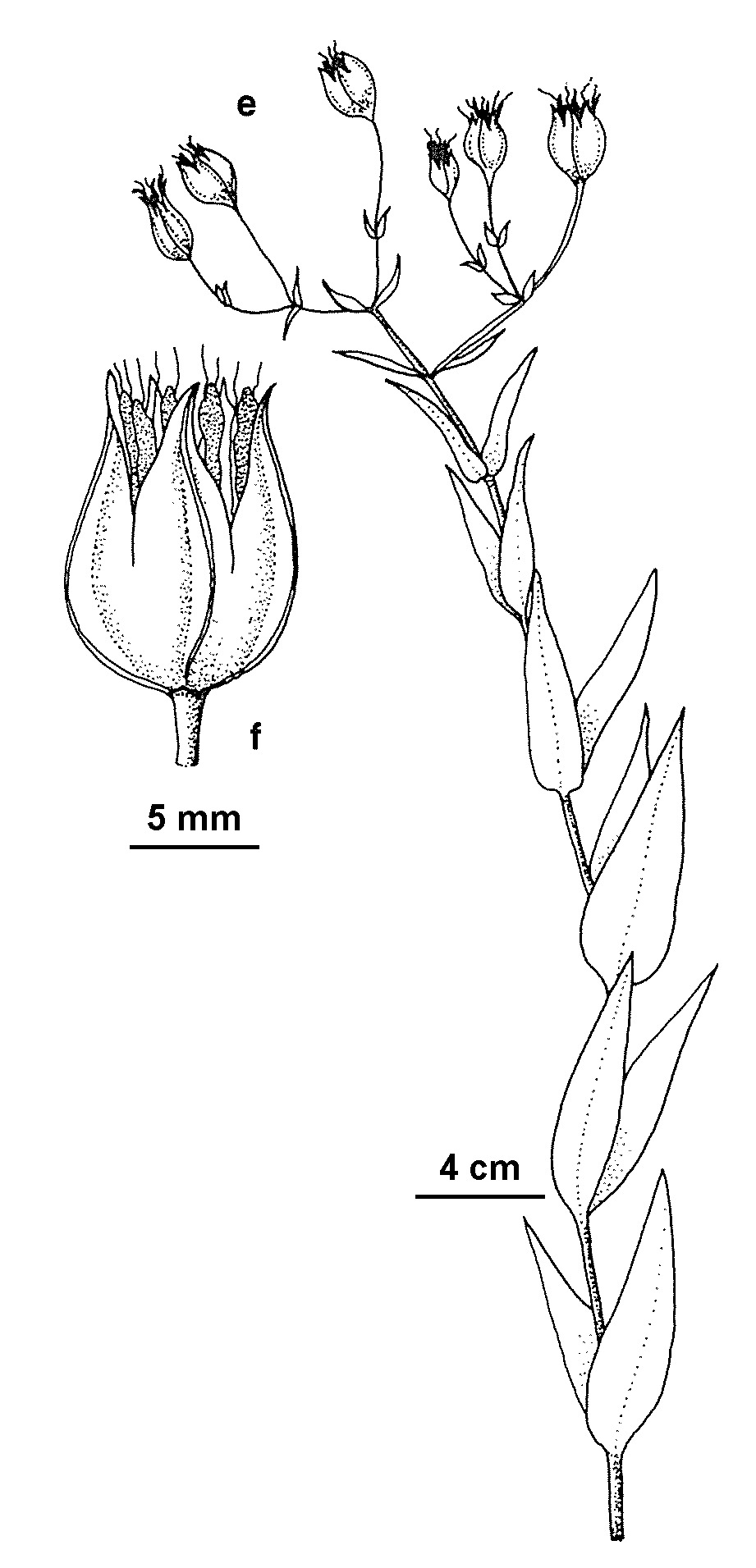Gypsophila
Annual or perennial herbs (dwarf undershrubs in some non-Australian species); glabrous and glaucous, or glandular-hairy. Leaves opposite or pseudo-verticillate; bracts scarious, at least at the connate base. Flowers in heads or dichasia, rarely solitary, 5-merous, bisexual; epicalyx absent; calyx campanulate-turbinate or tubular, 5-veined and winged, or inflated with 5-winged veins and lacking wings, green with scarious seams between veins; petals exceeding calyx; coronal scales absent; stamens 10; ovary 1-celled, with several ovules, styles 2. Capsule narrow-obovoid, opening by 4 teeth; carpophore absent; seeds several, asymmetric-pyriform to subreniform, flattened, tuberculate, rarely smooth.
About 125 species, native to temperate Eurasia, especially the eastern Mediterranean; 2 species naturalised in Australia.
The generic concept of Gypsophila has been expanded, and it now includes Vaccaria (Madhani et al. 2017).
Adams, L.G. (1996). Caryophyllaceae. In: Walsh, N.G.; Entwisle, T.J., Flora of Victoria Vol. 3, Dicotyledons Winteraceae to Myrtaceae, pp. 228–271. Inkata Press, Melbourne.
 Spinning
SpinningSynonyms
Madhani, H.; Rabeler, R.; Pirani, A.; Oxelman, B.; Heubl, G.; Zarre, S. (2017). Untangling phylogenetic patterns and taxonomic confusion in tribe Caryophylleae (Caryophyllaceae) with special focus on generic boundaries. *Taxon * 67(1): 83–112.




